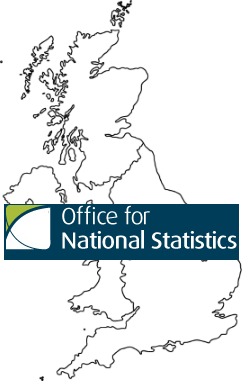Office for National Statistics estimates net migration at +273,000, down from previous year
The latest migration statistics by the Office for National Statistics (ONS) show a drop in net migration.
 The ONS estimates that net long-term international migration was 273,000 in the year ending September 2016, down 49,000 over the previous year.
The ONS estimates that net long-term international migration was 273,000 in the year ending September 2016, down 49,000 over the previous year.
February's Migration Statistics Quarterly Report can be read in full here.
The main points from the report are:
• The reporting period for the International Passenger Survey data in this release is for year ending (YE) September 2016 and therefore includes 3 months of data following the EU referendum; entry clearance visa, National Insurance number (NINo) and labour market data are available to the end of December 2016.
• Net long-term international migration was estimated to be +273,000 in YE Sept 2016 (down 49,000 (not statistically significant – for more information see Things you need to know about this release) from YE Sept 2015); comprising +165,000 EU citizens, +164,000 non-EU citizens and -56,000 British citizens.
• Immigration was estimated to be 596,000 in YE Sept 2016, (down 23,000 (not statistically significant) from YE Sept 2015); comprising 268,000 EU citizens, 257,000 non-EU citizens and 71,000 British citizens.
• Emigration was estimated to be 323,000 in YE Sept 2016 (up 26,000 (not statistically significant) from YE Sept 2015); comprising 103,000 EU citizens, 93,000 non-EU citizens and 128,000 British citizens.
• EU immigration included a statistically significant increase for EU2 citizens (up 19,000 to 74,000 – highest estimate recorded); partially offset by a not statistically significant decrease for EU8 citizens (down 10,000 to 58,000); immigration for EU15 citizens was flat.
• The increase in emigration includes statistically significant increases for EU8 citizens, up 12,000 to 39,000, and non-EU citizens from the group Africa, the Americas and Oceania, up 11,000 to 39,000.
• Long-term immigration to study (134,000) saw a statistically significant decrease of 41,000 from YE Sept 2015, the majority of which were non-EU (87,000 – down 31,000); however, the number of visas issued over the same period to non-EU students for 12 months or more was 141,286, up 2%; for more information see Things you need to know about this release.
• In YE Sept 2016, 294,000 people immigrated to work, similar to the previous year; of these 190,000 (65%) had a definite job to go to (the highest estimate recorded) compared with 169,000 in YE Sept 2015 and 104,000 arrived looking for work compared with 120,000 the previous year; however, neither change was statistically significant.
• In 2016, there were 626,000 NINo registrations by EU nationals (down 1% on the previous year) and 198,000 by non-EU nationals (up 1% on the previous year); note the NINo data include many short-term migrants.
• In YE Sept 2016, 180,000 EU citizens arrived for work compared with 164,000 the previous year (not statistically significant); of these 113,000 had a definite job to go to, up 18,000 compared with the previous year (not statistically significant).
• There were 38,517 asylum applications (including dependants) in 2016, a decrease of 1,451 from 2015 (4%) and the first annual fall since 2010; in addition, a further 4,369 people were granted humanitarian protection under the Syrian Vulnerable Persons Resettlement Scheme in 2016.